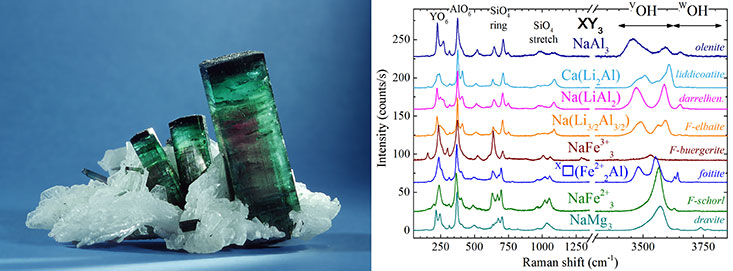Composition, temperature and pressure dependence of phonons in hydrous complex silicates

Currently, the mineral supergroups amphiboles (AB2C5T8O22W2) and tourmalines (XY3Z6T6O18(BO3)3V3W) which are relevant in wide areas of geosciences, are the focus of our crystal chemical investigations using Raman spectroscopy.
For example, amphiboles are represented as rock-forming minerals in many rocks and their species are representative for the different rock types and their chemical composition. In addition, they occur in the most diverse temperature and pressure ranges of the Earth's crust and can be used as geothermometers or geobarometers.
Amphiboles and tourmalines have complex chemical compositions. They have a number of crystal lattice positions that can be occupied by a wide variety of chemical elements. The different species of these mineral groups are difficult and instrumentally expensive to determine precisely. On the one hand, our crystal-chemical studies with the Raman spectroscope aim to enable simple and direct identification of these minerals. On the other hand, these investigations are fundamentally important for the understanding of thermodynamic reactions and thus for the modification of physical properties.

